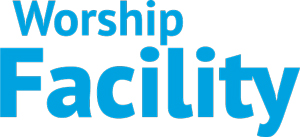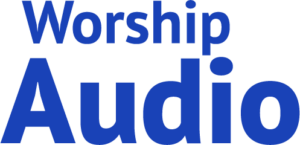Many houses of worship have either purchased or are thinking about doing more with intelligent lighting fixtures, also known as moving lights or automated lights. These are advanced lighting devices that offer a variety of features for dynamic and customizable lighting control. In a house of worship, intelligent lighting fixtures can significantly enhance the atmosphere, focus attention, and support various elements of services and events. Here’s how they work and a few applications that are used in a house of worship setting:

The Basic Fixtures & Setup of the Fixtures
Fixtures: Intelligent lights like moving heads, LED wash lights, and spotlights are strategically placed around the sanctuary. These might be mounted on trusses, walls, or the ceiling.
Light Source: The core element that emits light, often LEDs or discharge lamps.
Pan and Tilt Mechanisms: Motors that enable the fixture to move horizontally (pan) and vertically (tilt).
Lenses and Optics: Adjust the beam spread, focus, and sharpness.
Color Wheels and Filters: Allow the light to project different colors.
Gobos: Metal or glass stencils that shape the light into patterns.
Dimming Mechanisms: Control the intensity of the light.
Control System: Manage the operation of the fixture, responding to control signals. A lighting console or computer software controls the fixtures, often using the DMX512 protocol.
Programming: Lighting scenes and cues are programmed in advance to align with the flow of the service or event.
Control
Intelligent lighting fixtures are controlled via lighting control protocols, most commonly DMX512. DMX512 allows up to 512 channels of control per universe, with each channel managing a specific attribute of the light (e.g., pan, tilt, color), allowing you to manage the operation of the fixture and responding to control signals. A lighting console or computer software controls the fixtures, often using the DMX512 protocol. The DMX512 protocol is a standard for digital communication networks that are commonly used to control lighting and effects.
Operation Set Up
Pre-Service Setup: Before the service begins, lighting technicians program scenes that match the different segments of the service, such as worship, sermons, and announcements.
Programming: Using a lighting console or software, you program scenes or cues that define the positions, colors, intensity, and patterns of the lights.
Signal Transmission: The console sends DMX signals through a cable (or wirelessly) to the fixtures, instructing them how to behave.
Fixture Response: The fixture’s control electronics decode the DMX signals and actuate the motors, color wheels, gobos, and other components to achieve the desired effect.
Real-Time Control: During the service, a technician can manually control the lighting or trigger pre-programmed cues. This can be done from a lighting console or through lighting control software on a computer.
Integration with Other Systems: Intelligent lighting can be synchronized with audio and video systems for a cohesive multimedia experience.
Features
- Movement: Fixtures can pan and tilt to cover different areas.
- Color Mixing: Using RGB or CMY color mixing, fixtures can produce a wide spectrum of colors.
- Gobo Projection: Create patterns and textures with gobos.
- Zoom and Focus: Adjust the size and sharpness of the light beam.
- Effects: Strobe effects, prism effects, and more can add dynamism.

Applications
Worship and Music: Enhance worship songs with dynamic lighting that changes with the music, creating an immersive experience.
- Color Changes: Use different colors to reflect the mood of the music or lyrics.
- Movement: Pan and tilt lights to follow the movement on stage or create sweeping effects.
- Special Effects: Use strobes or gobos for dramatic moments.
Sermons: Focus attention on the speaker with spotlighting and subtle changes in lighting to emphasize key points.
- Spotlight: Use a single spotlight to highlight the speaker.
- Dimming: Gradually dim the lights to draw the congregation’s focus.
Thematic Lighting: For special events like holidays, weddings, or baptisms, create themed lighting setups.
- Holiday Themes: Use colors and patterns that reflect the holiday (e.g., red and green for Christmas).
- Event-Specific: Customize lighting for weddings with softer, romantic hues or for baptisms with a focus on the baptismal font.
Architectural Lighting: Highlight architectural features of the sanctuary or stage.
- Accent Lighting: Illuminate specific features like stained glass windows, altars, or crosses.
- Ambient Lighting: Create a warm, welcoming atmosphere with ambient light.
Intelligent lighting fixtures are used in various settings:
- Theatrical Productions: For dynamic scene changes and special effects.
- Concerts: To create immersive lighting shows.
- Architectural Lighting: Highlighting features of buildings.
- House of Worship: Enhancing the atmosphere and focusing attention.
Benefits
Enhanced Engagement: Dynamic lighting can make services more engaging and memorable.
Focus and Attention: Direct attention where it is needed, enhancing the effectiveness of the message.
Flexibility: Easily adjust lighting to suit different types of services and events.
Atmosphere Creation: Set the right mood and atmosphere to support the intended emotional response.
Implementation Tips
Training: Ensure that your lighting technicians are well-trained in using the control systems and programming scenes.
Collaboration: Work closely with worship leaders, musicians, and speakers to understand their needs and preferences.
Experimentation: Don’t be afraid to experiment with different lighting setups to find what works best for your space and congregation.
Maintenance: Regularly maintain and update your lighting equipment to ensure it functions reliably.
Understanding these fixtures better can help you make a better purchase for your house of worship. The more planning and research you put in to your lighting system, the happier it will make you, your tech team, and your congregation.


